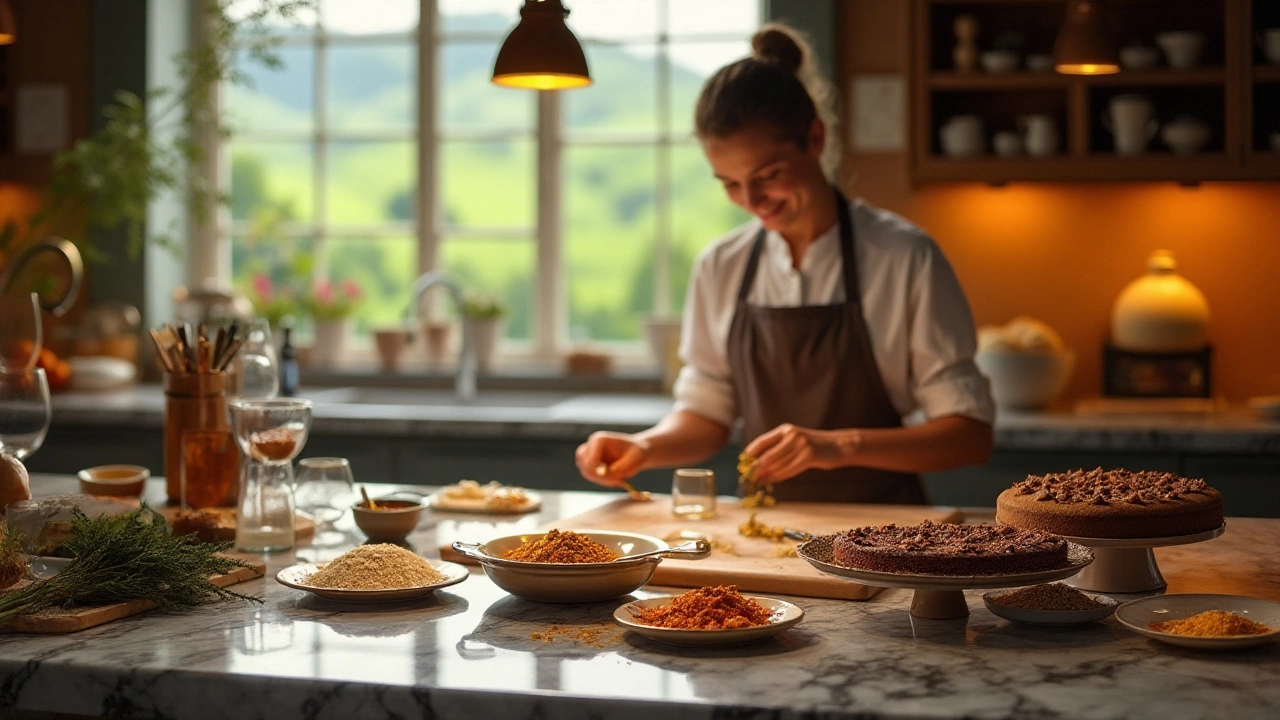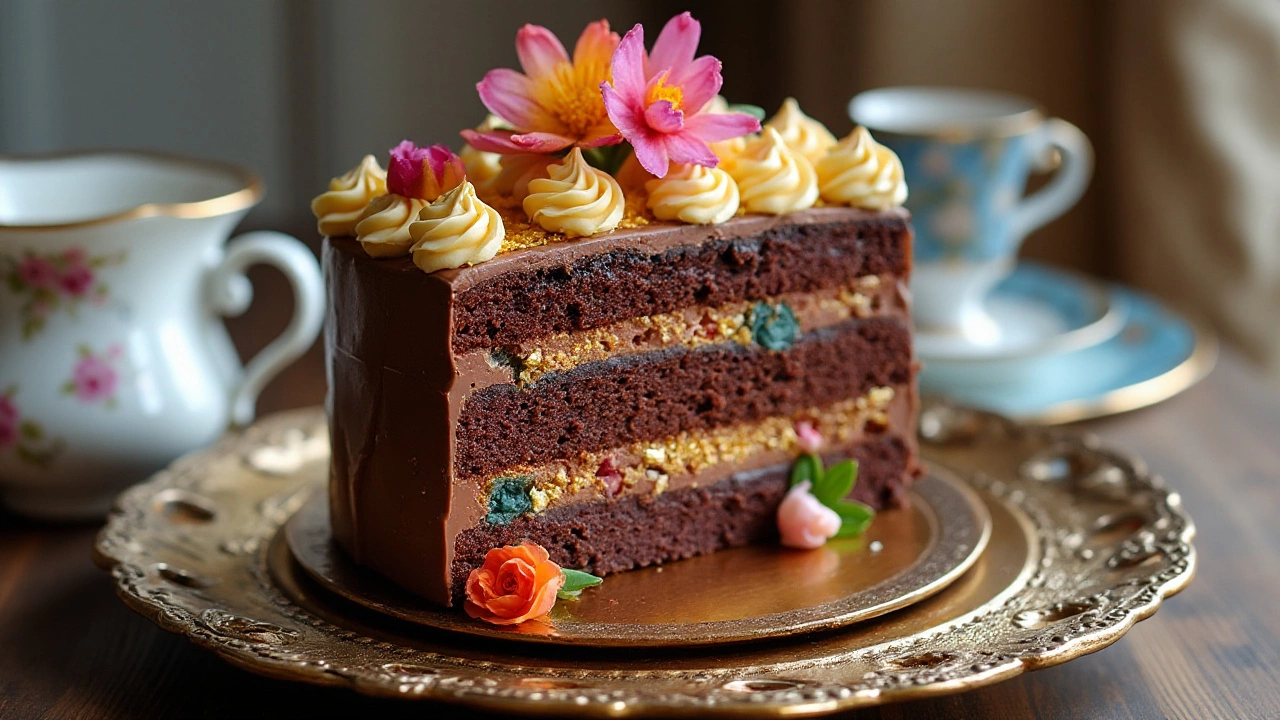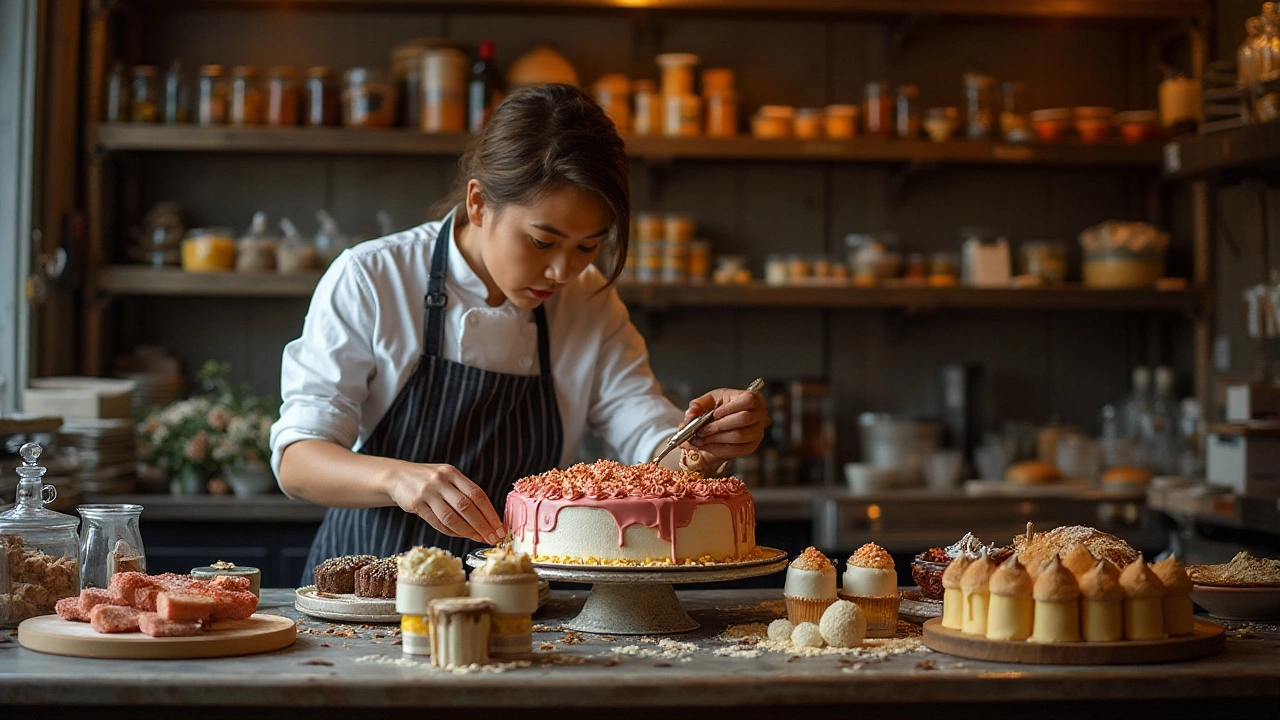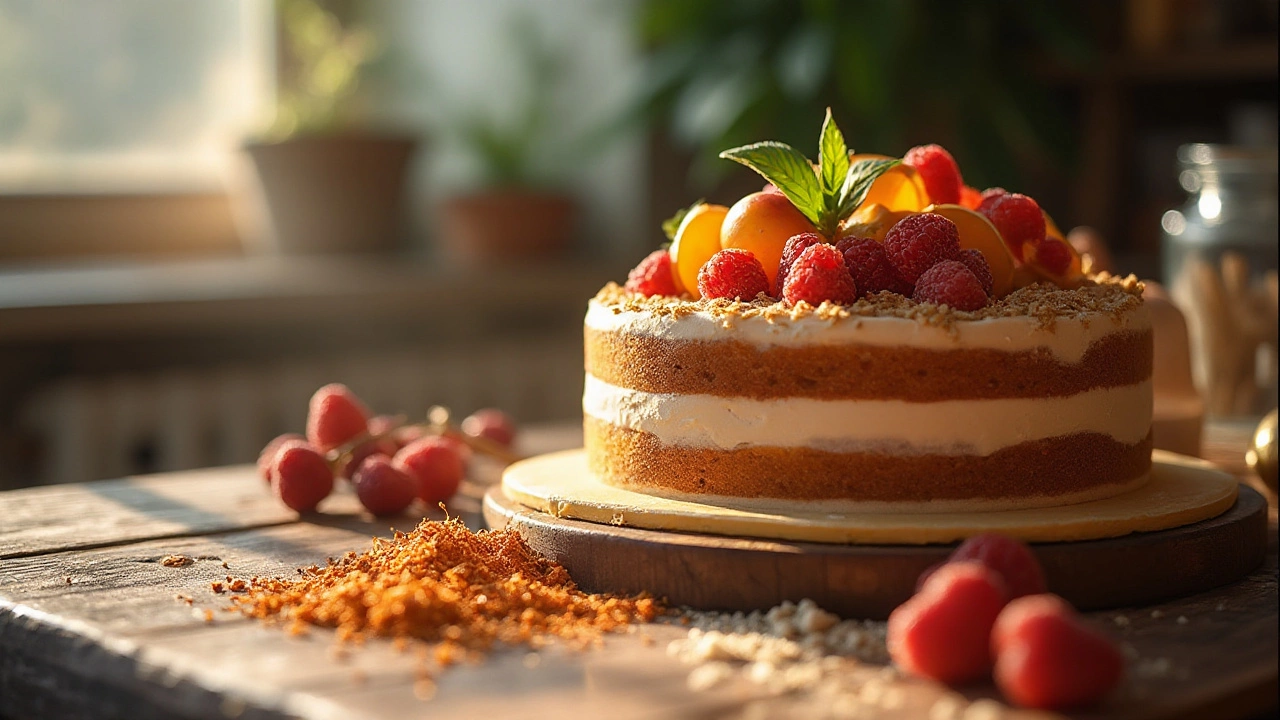
Baking is more than just a simple mix of flour, butter, and sugar. For some, it’s an art. And in the realm of art, no masterpiece is without its price. People have always been captivated by the idea of luxury, and when it comes to homemade cakes, the stakes are surprisingly high.
In the world of lavish desserts, a cake's value is not only measured by the ingredients it’s made from but also by the level of skill and creativity involved. A few select bakers have endeavored to make cakes that are not just jaw-droppingly beautiful but downright costly to create. What makes these cakes so expensive? Is it the rare ingredients or the meticulous process? Today, let's take a closer look at this deliciously expensive phenomenon.
- Pricey Ingredients that Make it Shine
- The Art of Crafting a Luxe Cake
- History of Luxurious Cakes
- Tips for Baking Your Own Extravagant Cake
Pricey Ingredients that Make it Shine
To craft the most expensive cake, bakers select ingredients that transform an ordinary dessert into a masterpiece fit for royalty. Take, for instance, the indulgent inclusion of premium vanilla beans grown in the Madagascar region, where the rich, deep flavor profile enhances any confection with unparalleled finesse. The intense labor required to harvest these beans adds to their allure and cost, making them a prized possession in the baking world.
Meanwhile, fine chocolate from the rainforests of Venezuela, specifically the rare and coveted Porcelana variety, often graces the layers of such a cake. Known for its smooth and creamy qualities, this chocolate commands a high price due to its limited availability and the intricacy of the process needed to transform the cacao into splendid bars. There's a saying amongst pastry chefs that the chocolate's taste must be worth its weight in gold, and this particular type certainly meets the mark.
The chef behind the world's most expensive cake once remarked, 'Every ingredient must contribute to a symphony of flavors that elevates the cake beyond a mere dessert.'
Then there is saffron, the luxurious spice most often associated with savory dishes, astonishingly used in baking to provide a golden hue and aromatically floral flavor. It takes over seventy thousand flowers to produce just one pound of saffron threads, which explains its exorbitant price tag. These threads, with their unique and compelling taste, are often the hidden gems within a slice of luxury cake.
No extravagant cake would be complete without a touch of edible gold leaf, which acts as both a garnish and a spectacle. Very few experiences compare to biting into a slice lavishly adorned with sheets of real gold, which, aside from being deliciously over-the-top, surprisingly doesn't dramatically alter the cake's flavor. It's the visual impact and the extraordinary statement that they convey.
In rare instances, truffles, those earthy treasures unearthed by specially trained pigs and dogs, are infused into the cake batter. These fungi are famous for their distinctive aroma that can transform the taste of a dish instantly. While it is uncommon, when used subtly, they can add a complex, savory depth that contrasts with the cake's sweet notes.
Finally, let's not forget about the utilization of Dom Pérignon champagne to moisten the layers or its cousin, Cristal, to whip up a luxurious buttercream. The refined bubbles of these beverages, when used in baking, ensure that every bite goes down with that effervescent touch, truly making every slice a celebration.

The Art of Crafting a Luxe Cake
Creating a luxury cake isn't just about following a recipe; it's an immersive experience that challenges even the most accomplished bakers. Each element of the cake—from the base to the decorative finishes—demands unparalleled skill and meticulous attention to detail. Start with the foundation: the choice of flour, butter, and sugar sets the stage for what’s to come. The quality of these basic ingredients can make or break not just the flavor, but also the texture of your cake. Artisanal flours, like those milled from ancient grains, or specialty butters with a higher fat content, imbue the cake with a depth of flavor that's hard to match.
Consider the fillings and frostings. These are where creativity and indulgence converge. Imagine infusing ganache with Madagascar vanilla or using edible gold leaf to cap off a silky buttercream. Elevating a cake's opulence often involves incorporating traditional techniques like piping and sugar art, which transform it into a showpiece rather than just a dessert. Each layer and detail adds complexity to the overall design, which is why skilled hands are pivotal in bringing a luxe cake to fruition.
The artistry of a luxury cake is not just in the preparation, but in the presentation. Haute patisserie often borrows from the world of high fashion, with colors and textures that mimic fabrics or artistic styles. Some chefs draw inspiration from nature, using fresh, organic blooms as decorations. This ability to blend baking with art is what sets extravagant cakes apart from the conventional. It's a field where passion and dedication are as crucial as precision.
Today, the market for lavish desserts sees bakers traveling worldwide to source exceptional ingredients, sometimes going so far as to customize blends of chocolate or vanilla to achieve a distinct taste profile. The logistics of assembling such components play into the cake's final cost, creating an air of exclusivity that appeals to gourmets and connoisseurs alike.
"Baking is like painting, or writing a song. Just as there are so many notes or colors, there are only so many flavors – it's how you combine them that sets you apart," says acclaimed pastry chef Dominique Ansel.
Ultimately, crafting a costly homemade cake is both a performance and a testament to the chef's dedication, skills, and vision. It's about balancing creativity with technique to produce something truly unique. Whether you are making it for an event or as a gift, the experience of both making and tasting a luxury cake is bound to leave a lasting impression.

History of Luxurious Cakes
The fascination with expensive cakes is not a modern invention. The history of lavishly decorated and luxurious cakes dates back centuries. In medieval Europe, cakes were already symbols of wealth and status. Nobles flaunted their prosperity by hosting extravagant feasts that often featured enormous and intricate cakes, rich with the ingredients that were rare for the time, such as spices and sweeteners. Sugar itself was considered a luxury due to its high cost and limited availability. As such, cakes were often adorned with intricate designs and coated in sugar to signify opulence and prestige.
During the Renaissance, cake-making became an art form. Master bakers were the stars of royal courts, commissioned to create the most extraordinary confections for weddings and other grand events. It was not uncommon for these early cakes to contain gold leaf, nuts, and fruits from distant lands. Such ingredients were not merely for flavor, but to demonstrate the host's power and reach across continents. This era also saw the rise of marzipan and royal icing, which adorned cakes with splendid decorative touches. These cakes were designed to astonish guests and were often the showpiece of grand feasts.
In the 18th and 19th centuries, with industrialization and the increase in sugar production, cakes became more accessible to the common folk, yet the tradition of the luxury baking persisted among the elite. The Victorian era, in particular, embraced excessive decoration, where cakes were towering concoctions of Victorian sponges, creams, and elaborate sugar work. These were seen especially in the French courts, where pastry chefs developed groundbreaking techniques in baking and presentation that laid the groundwork for what we now consider gourmet desserts.
Fast forward to modern times, the tradition continues but with a twist. Today, some of the most expensive homemade cakes can include edible gold, imported truffles, and artisanal chocolate. An interesting example is the cake created by Debbie Wingham, a bakery mastermind, whose cake for a Dubai client cost over $1 million. Notably, it was decorated with diamonds, showing that the desire for opulence has yet to lose its appeal. As reported by Forbes, opulent cakes are not just about taste but storytelling and art.
"A cake is not merely a dessert; it's a sensory experience wrapped in nostalgia," stated culinary historian Dr. Libby O’Connell.
Looking at these historical trends, it’s clear that, across time, luxurious cakes are more than just confections. They embody culture, sociopolitical power, and artistic creativity. Even today, as we delve into our kitchens to replicate these wonders, we aren’t just following a recipe - we’re participating in a rich tapestry of human history. If you're inspired to recreate a small piece of this grandeur, remember it's about much more than the cost; it's about creating something truly memorable.

Tips for Baking Your Own Extravagant Cake
Creating an extravagant homemade cake that could stand toe-to-toe with some of the world's priciest desserts is both a challenge and a joy. The secret isn't just about throwing money at expensive ingredients but rather understanding how each component works together to elevate the cake's allure. Let's start with flavor selection. This is where you can let your creativity shine. Think about combinations that excite you; maybe it's the rich depth of Madagascar vanilla paired with the sharpness of raspberries, or the smoothness of premium chocolate mixed with a hint of espresso. The key is balance, ensuring each flavor complements the other without overpowering. Also, sourcing high-quality ingredients can make all the difference. Organic and local ingredients not only contribute to taste but also add an ethical touch to your luxurious cake project.
Next, focus on technique and presentation. Techniques like tempering chocolate or perfecting meringues can add that real wow factor to your cake. It’s worth investing time in mastering these skills, as they can dramatically change the presentation and texture of your cake. Use of gold leaf or edible flowers can transform a simple cake into a piece of art. Don’t forget, fine details can captivate just as much as bold decorations. The piping work is a precise art that requires patience but can make your cake a centerpiece. Leverage tutorials or even online classes to refine techniques. As the illustrious cake designer Peggy Porschen once said,
"A well-decorated cake is so much more than dessert. It's an edible piece of art that brings joy."
Now, let's discuss some practical aspects like cost management. While the goal is lavishness, it's still smart to have a budget in mind. Creating a spreadsheet of projected expenses based on ingredients and tools can help you stay on track. Consider what elements are worth a splurge and where you might save with reasonable substitutes. You might invest in Belgian chocolate but opt for locally sourced fresh cream. Baking is an act of love and creativity, and sometimes finding inventive ways to cut costs without sacrificing quality can be the most rewarding part.
Last but not least, think about presentation and guest experience. The moment a guest sets eyes on your cake, the experience begins. Think about the setting, lighting, and accompanying treats or beverages that pair beautifully. A well-matched wine or coffee can enhance the flavors of the luxury cake on offer. Invest time in planning how the cake will be served, ensuring it's done in a way that honors the time and effort put into crafting it. This holistic approach to aid in maximizing both the visual and tasting pleasure is an integral aspect of luxury cake baking.